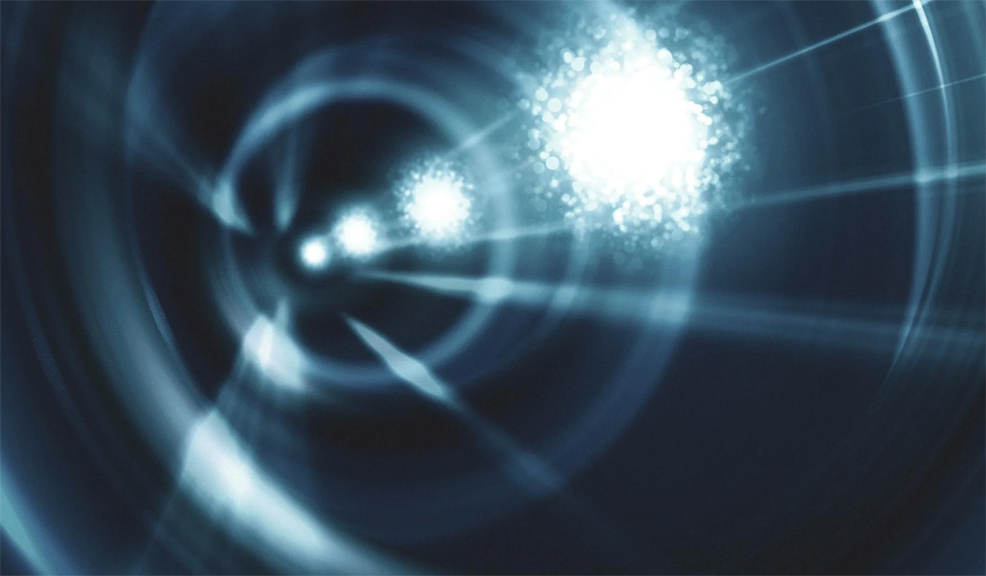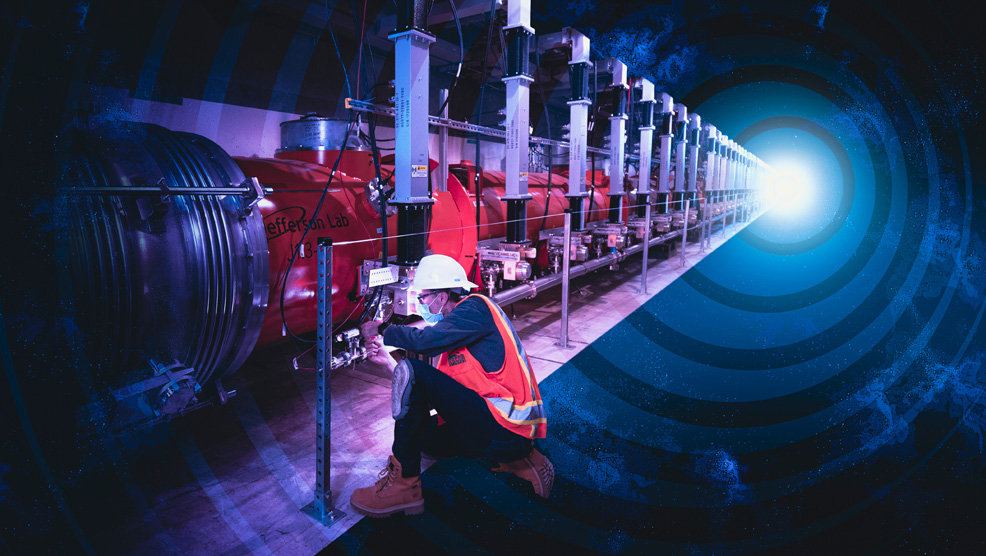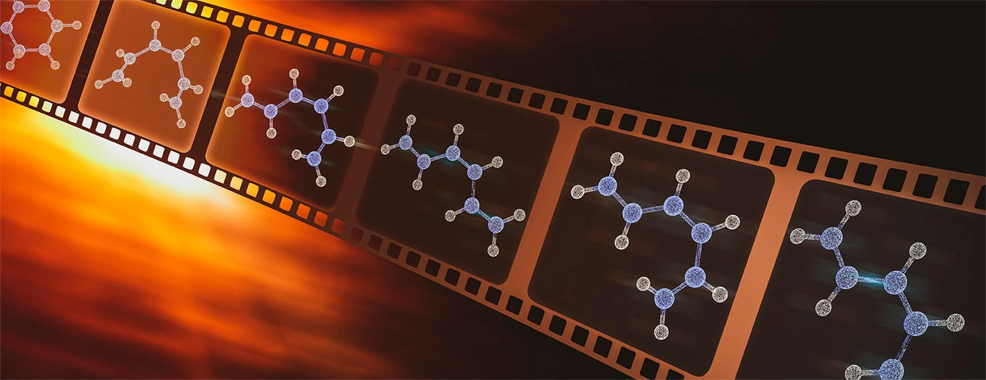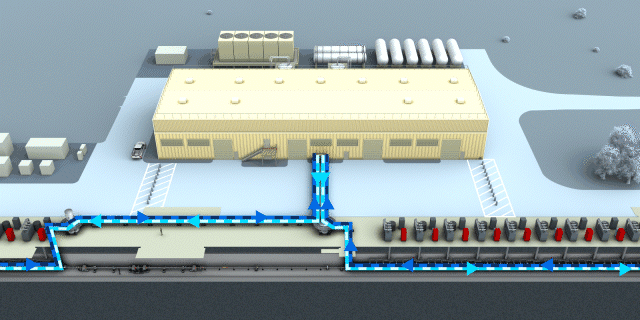
21st September 2023 X-ray laser could transform atomic-scale research A major upgrade of the Linac Coherent Light Source has been completed at the SLAC National Accelerator Laboratory, California. This latest version is 8,000 times faster and 10,000 times brighter, enabling scientists to observe molecular events in unprecedented detail.
The newly upgraded Linac Coherent Light Source (LCLS) X-ray free-electron laser (XFEL) at California's SLAC National Accelerator Laboratory has successfully produced its first X-rays, and researchers around the world are lined up to kick off an ambitious science program. The upgrade, called LCLS-II, now makes it the world's most powerful X-ray laser, surpassing the European XFEL near Hamburg, Germany. LCLS-II will create unparalleled capabilities, ushering in the next era of research with X-rays. Scientists will be able to examine the details of quantum materials with unprecedented resolution to drive new forms of computing and communications; reveal unpredictable and fleeting chemical events to teach us how to create more sustainable industries and clean energy technologies; study how biological molecules carry out life's functions to develop new types of pharmaceuticals; and study the world on the fastest timescales to open up entirely new fields of scientific investigation. "This achievement marks the culmination of over a decade of work," said Greg Hays, LCLS-II Project Director. "It shows that all the different elements of LCLS-II are working in harmony to produce X-ray laser light in an entirely new mode of operation."
Reaching "first light" is the result of several key milestones that began in 2010 with a vision of upgrading the original LCLS and blossomed into a multi-year ($1.1 billion) upgrade involving thousands of scientists, engineers, and technicians, as well as numerous institutional partners. XFELs like the LCLS-II produce ultra-bright, ultra-short pulses of X-ray light, allowing scientists to record the behaviour of molecules, atoms, and electrons in exquisite detail and on timescales that show precisely how chemical, biological, and material changes occur. They have been pivotal in many scientific advances, such as the creation of "molecular movies" to study complex chemical processes, watching in real time the way in which plants and algae absorb sunlight to produce the oxygen we breathe, and studying extreme conditions that drive the evolution of planets and phenomena such as diamond rain.
The original LCLS produced its first light in 2009, accelerating electrons through a copper pipe at room temperature, which limited its rate to 120 X-ray pulses each second. The LCLS-II upgrade, however, takes X-ray science to a whole new level. It can produce up to a million X-ray pulses per second – 8,000 times more than LCLS, with an almost continuous X-ray beam that on average will be 10,000 times brighter than its predecessor: a world record for today's most powerful X-ray light sources. Central to these enhanced capabilities is a revolutionary superconducting accelerator. This comprises 37 cryogenic modules, which are cooled to -271°C (-456°F) – just 2°C above absolute zero – a temperature at which it can boost electrons to high energies with nearly zero energy loss. The superconducting accelerator works alongside the existing copper one, allowing researchers to make observations over a wider energy range, capture detailed snapshots of rapid processes, probe delicate samples that are beyond the reach of other light sources and gather more data in less time, greatly increasing the number of experiments that can be performed at the facility. In addition to a new accelerator, LCLS-II required many other cutting-edge components, including a new electron source, two helium cryoplants that produce refrigerant for the cryomodules (illustrated below), and two new undulators to generate X-rays from the electron beam, as well as major leaps in laser technology, ultrafast data processing, and advanced sensors and detectors. The "soft" and "hard" X-ray undulators produce X-rays with low and high energy, respectively – a versatility that allows researchers to tailor their experiments more precisely, probing deeper into the structures and behaviours of materials and biological systems.
"The light from LCLS-II will illuminate the smallest and fastest phenomena in the universe and lead to big discoveries in disciplines ranging from human health to quantum materials science," said Jennifer M. Granholm, U.S. Secretary of Energy. "This upgrade keeps the United States at the forefront of X-ray science, providing a window into how our world works at the atomic level. Congratulations to the incredibly talented engineers and researchers at SLAC who have poured so much into this project over the past several years, all in the pursuit of knowledge." "We're excited to see our collaborations with SLAC and Berkeley Lab help to empower this light source of the future," said Argonne National Laboratory Director Paul Kearns. "The advanced technology behind LCLS-II will enable the Department of Energy (DOE) user facility community to significantly increase our understanding of the world around us. Congratulations to SLAC and to everyone who contributed to this remarkable scientific achievement." "Experiments are set to begin in the coming weeks and months, attracting thousands of researchers from across the nation and around the world," said LCLS Director Mike Dunne. "DOE user facilities such as LCLS are provided at no cost to the users – we select on the basis of the most important and impactful science. LCLS-II is going to drive a revolution across many academic and industrial sectors. I look forward to the onslaught of new ideas – this is the essence of why national labs exist." A further upgrade for the Linac has been proposed for 2030. China is also constructing its own XFEL, known as SHINE (Shanghai HIgh repetition rate XFEL aNd Extreme light facility), which aims to match the LCLS-II in repetition rate and is scheduled for completion in 2027.
Comments »
If you enjoyed this article, please consider sharing it:
|










